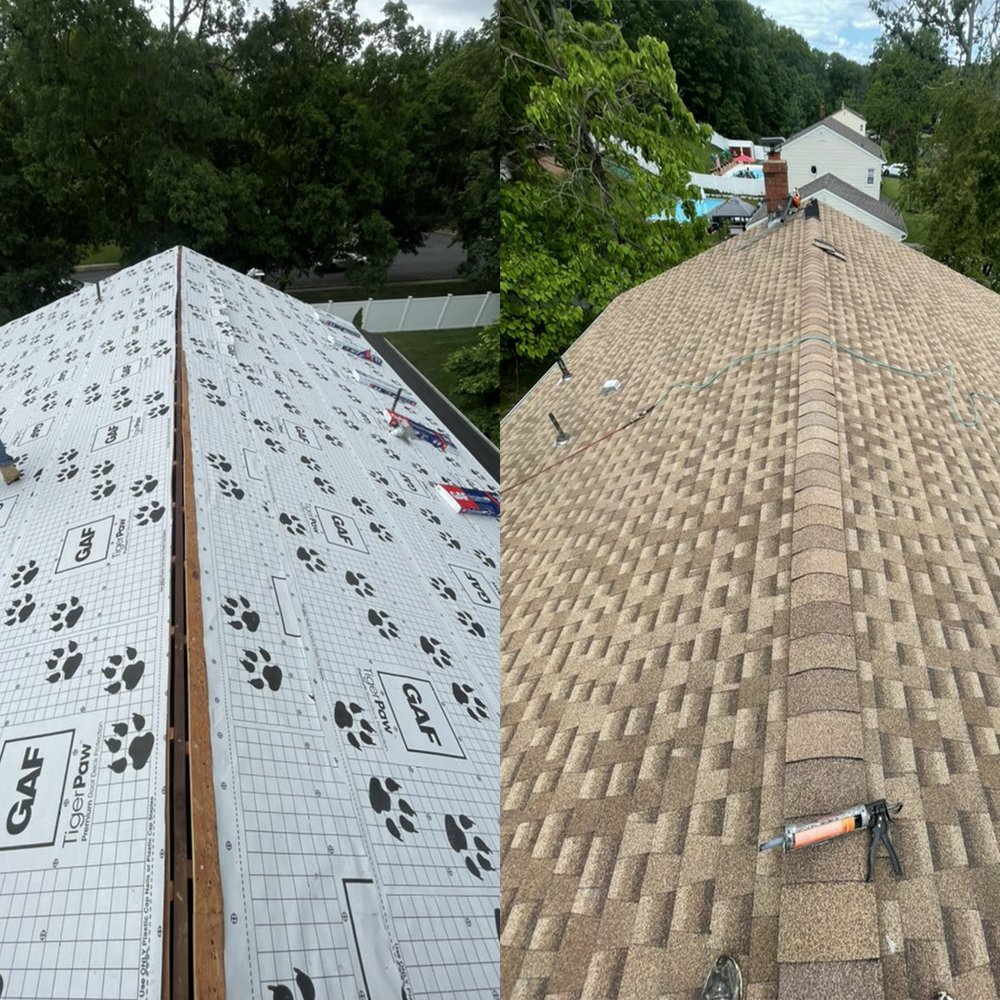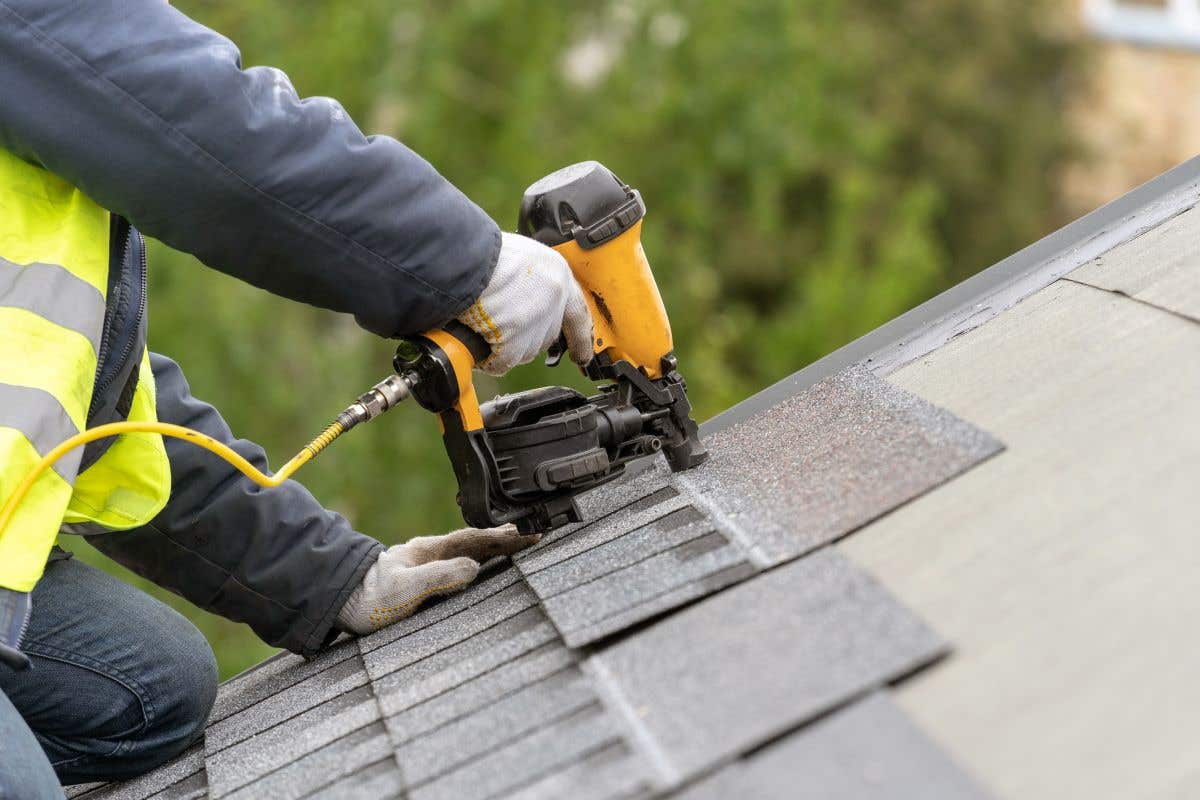Roofing Oahu: Professional Roofer for Your Oahu Residential or commercial property
Roofing Oahu: Professional Roofer for Your Oahu Residential or commercial property
Blog Article
Comprehending the Various Sorts Of Roof Coverings: A Comprehensive Overview for Homeowners
In the world of homeownership, selecting the appropriate roofing style is a decision that carries considerable ramifications for both performance and aesthetic charm. With a range of options-- ranging from the standard gable to the contemporary flat-- each type presents one-of-a-kind benefits and obstacles that need to straighten with the property owner's particular needs and environmental considerations. Comprehending these distinctions not only help in making an enlightened option but also affects lasting upkeep and energy efficiency. As we check out the details of numerous roofing types, it becomes noticeable that a person size does not fit all; the right selection may surprise you.
Gable Roofing Systems
Saddleback roofs, defined by their triangular shape, are among one of the most popular roof styles because of their simpleness and efficiency in losing water and snow. This design features 2 sloping sides that meet at a ridge, enabling reliable drainage and reducing the risk of water build-up. The high pitch commonly related to saddleback roofs improves their capacity to deal with hefty rainfall, making them appropriate for different environments.
In enhancement to their useful advantages, saddleback roofs provide aesthetic adaptability. They can be adjusted to numerous architectural styles, from conventional to modern-day homes. The layout can also accommodate extra functions such as dormer windows, which boost all-natural light and air flow in the attic space.
Furthermore, gable roofing systems give enough space for insulation, adding to energy effectiveness. House owners can pick from a variety of roofing materials, including asphalt shingles, steel, and tiles, better improving customization alternatives.
Despite their advantages, saddleback roofs may need additional assistance in areas prone to high winds or hefty snowfall. On the whole, the gable roof continues to be a preferred choice due to its blend of capability, resilience, and aesthetic appeal.
Apartment Roofs
Level roofings are typically acknowledged for their minimal layout and sensible applications, specifically in commercial and industrial settings (oahu roofing). These roofs include a almost horizontal or horizontal surface area, which enables for easy building and construction and flexible area utilization. While they might lack the aesthetic allure of angled roofs, flat roofing systems use many advantages, especially in city environments where optimizing space is crucial
One of the primary advantages of flat roof coverings is their availability. Property owners can make use of the roofing space for different purposes, such as roof yards, balconies, or solar panel installments. Additionally, level roofs are normally much more cost-effective to mount and maintain compared to their sloped counterparts, as they call for fewer materials and labor.
Nonetheless, flat roofings do existing specific obstacles. Proper drain is essential to avoid water merging, which can cause leakages and architectural damage. Hence, choosing high-grade waterproofing materials and routine inspections are crucial for making sure longevity. Common materials utilized for level roof coverings consist of built-up roof (BUR), customized asphalt, and single-ply membrane layers, each offering distinctive advantages. Overall, flat roofings work as a versatile and useful option for lots of house owners and organizations alike.
Hip Roofing Systems
Hip roofing systems are characterized by their sloped sides that converge on top, creating a ridge. This style stands out from saddleback roofs, as all four sides of a hip roof incline downwards towards the walls, offering a more secure framework. The angle of the slopes can vary, permitting for versatility in building appearances and capability.
One of the primary benefits of hip roofings is their capability to withstand hefty winds and negative weather. The sloped surfaces enable far better water drainage, reducing the threat of leaks and water damages. Furthermore, hip roofing systems supply boosted attic area, which can be used for storage or perhaps converted right into habitable locations.
Nonetheless, building a hip roofing can be much more intricate and expensive than less complex roofing system kinds, such as saddleback roofs. The additional product and labor associated with developing the slopes and making certain proper architectural honesty can cause higher costs. Regardless of these disadvantages, several house owners favor hip roofings for their toughness, aesthetic charm, and possibility for energy performance.
Mansard Roofs
Mansard roofings, usually acknowledged by their special four-sided style, function 2 slopes on each side, with the lower slope being steeper than the top. This building design, originating from France in the 17th century, is not only visually attractive yet useful, as it maximizes the useful space in the upper floorings of a structure. The high lower slope permits more headroom, making it an excellent choice for attics or lofts, which can be converted right into living rooms.
Mansard roof coverings are characterized by their flexibility, fitting different building designs, from typical to modern-day. roof repair oahu They can be created with various products, including asphalt tiles, slate, or steel, giving home owners with a variety of alternatives to match their spending plans and choices. In addition, the layout permits the combination of dormer home windows, improving natural light and ventilation in the upper levels.
However, it is important to consider the potential downsides. Mansard roof coverings might need more upkeep as a result of the intricacy of their design, and their high inclines can be testing for snow and rain drainage. On the whole, mansard roofings integrate sophistication with usefulness, making them a preferred option among homeowners looking for distinct building functions.
Lost Roof Coverings
As house owners progressively look for simpleness and performance in their building styles, lost roofings have arised as a prominent choice. Defined by a single sloping aircraft, a shed roofing system offers a minimal aesthetic that matches various home designs, from modern to rustic.
Among the primary benefits of a shed roofing system is its uncomplicated construction, which usually translates to reduce labor and product costs. This design enables effective water drain, reducing the threat of leaks and water damage. Additionally, the upright incline supplies sufficient space for skylights, enhancing natural light within the inside.
Lost roofs likewise provide versatility in terms of usage. They can be successfully incorporated right into enhancements, garages, or outdoor structures like structures and sheds. Moreover, this roof covering style can accommodate different roof covering materials, consisting of metal, asphalt roof shingles, and even green roofs, aligning with green campaigns.
Nonetheless, it is vital to think about regional climate conditions, as heavy snow loads may require modifications to the roofing system's angle or structure. Generally, dropped roofings offer a practical and cosmetically pleasing alternative for homeowners aiming to take full advantage of performance without compromising design.
Verdict


Gable roofing systems, identified by their triangular shape, are among the most preferred roof covering styles due to their simplicity and performance in shedding water and snow. oahu roofing. The steep pitch typically linked with gable roofs enhances their capability to take care of hefty precipitation, making them suitable for different environments
While they might do not have the aesthetic appeal of pitched roofing systems, flat roofs supply numerous advantages, particularly in metropolitan settings where making best use of space is important.

Report this page